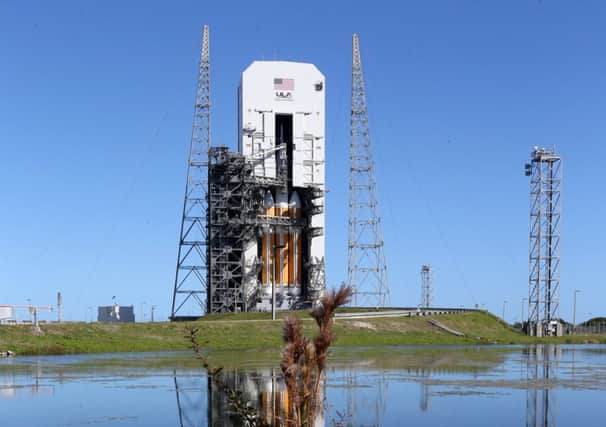Nasa prepares for countdown to Mars mission


The long-awaited launch of the capsule will be the first time in 42 years that a spacecraft with crew capabilities has been sent beyond low Earth orbit. The last time any such vehicle flew further was the Apollo 17 mission, the last of America’s moon landings, in 1972.
The unmanned flight, which will take Orion on a high-speed odyssey twice around the earth, is hailed by Nasa as its “next big step” on the path to the red planet.
Advertisement
Hide AdAdvertisement
Hide Ad“It’s a very critical mission. We will have accomplished a major milestone of this programme of sending humans, one of these days, to Mars,” said Nasa chief Charles Bolden.
The unmanned space capsule is scheduled to lift off aboard a Delta IV Heavy rocket from Cape Canaveral Air Force Station, in Florida, and splash down four and a half hours later in the Pacific Ocean, 600 miles off the coast of the state of Baja California.
CONNECT WITH THE SCOTSMAN
• Subscribe to our daily newsletter (requires registration) and get the latest news, sport and business headlines delivered to your inbox every morning
Its second orbit will see it shoot to a distance of 3,600 miles from the earth, taking it twice through the Van Allen Belts – areas of dangerously high radiation that could threaten its computers and guidance systems – and gathering momentum for a 20,000mph re-entry, using around 80 per cent of the velocity that it would face on a return trip from the moon.
The distance is the maximum that can be reached using a Delta IV Heavy. But for its second test flight scheduled for 2018, Orion will be powered into space by the new Space Launch System, the world’s most powerful rocket, which is currently under construction.
The purpose is to subject the capsule to the maximum stresses of speed, heat and radiation, to assess its suitability for future crewed missions.
“If we could go further for this test we probably would have. The higher the speed we can get going out, the higher the speed we can get coming back in,” said Nujoud Merancy, a member of Orion’s mission planning team.
The capsule’s speed, and its steep angle of descent as it interacts with Earth’s atmosphere on re-entry, will subject its heat shield to temperatures of up to 4,000F – almost twice as hot as molten lava. Friction and 11 parachutes, will slow it from 20,000mph to 20mph for splashdown.
Navy crews are on standby to fish it out of the Pacific.
Advertisement
Hide AdAdvertisement
Hide Ad“This is a huge day for us,” said Mark Geyer, Orion’s project manager.
“A part of me hopes that everything is perfect. But on a test flight like this…we want to discover things that are beyond our modelling capabilities and beyond our expertise so we can learn it and fix it before we put people aboard.”
The vehicle’s design and construction began under president George W Bush as part of a programme to send astronauts back to the moon, but was cancelled by president Barack Obama, then resurrected in modified form following a congressional outcry.
Built by Lockheed Martin under contract to Nasa, Orion has been built by a workforce of 3,300 people. Budgetary, political, bureaucratic and technical uncertainties have posed constant challenges to its progress.
SCOTSMAN TABLET AND IPHONE APPS